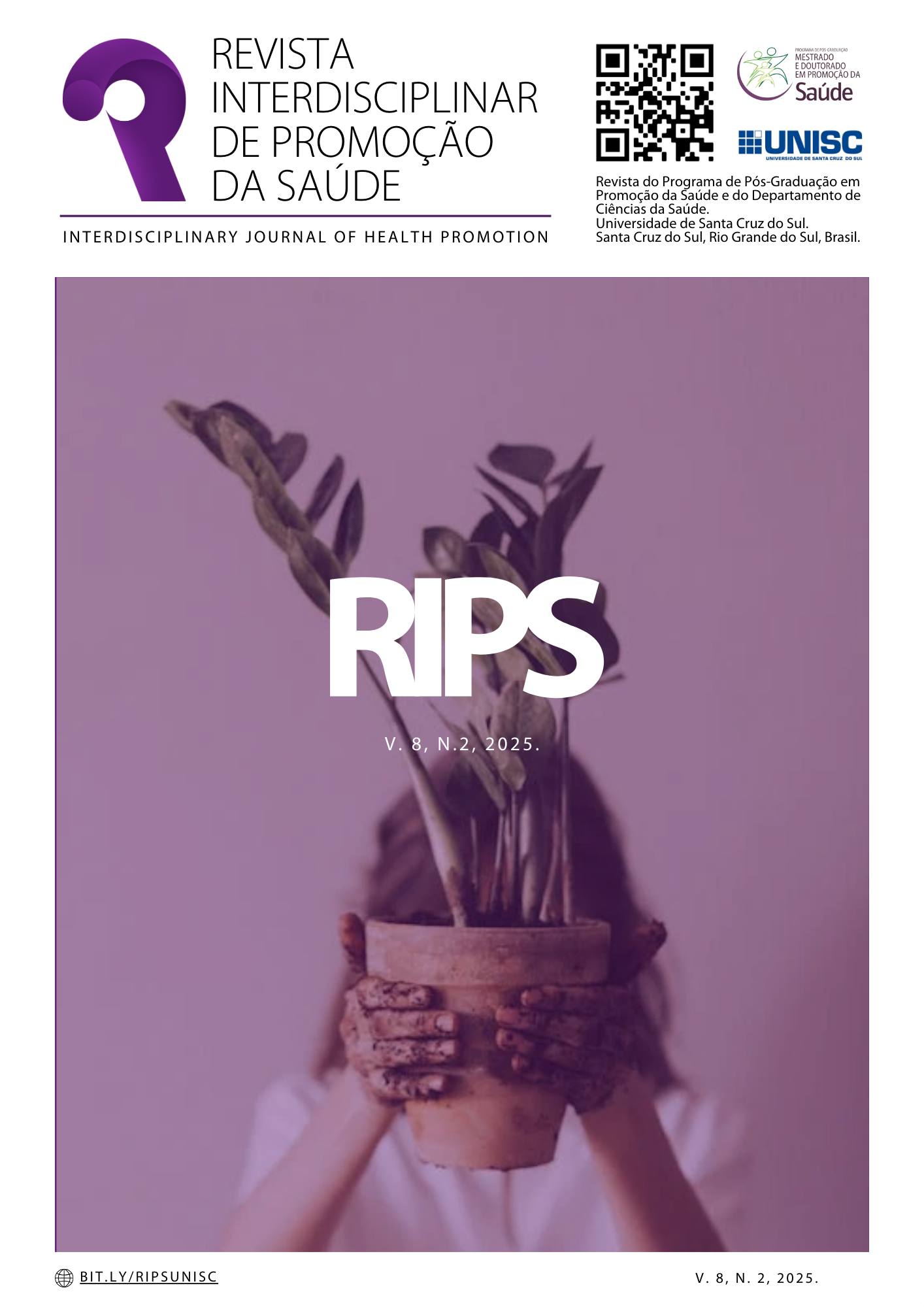SEGURANÇA DO PACIENTE UMA ANÁLISE ACERCA DA NOTIFICAÇÃO DE EVENTOS
DOI:
https://doi.org/10.17058/rips.v8i2.19298Palavras-chave:
Segurança do Paciente; , Notificação de Eventos;, Cuidados em Saúde;Resumo
Introdução: a segurança do paciente é pauta mundial nas agendas de gestão, justificada pela incidência de falhas relacionados à assistência à saúde. Método: estudo retrospectivo, descritivo e quantitativo, realizado em uma Policlínica tipo II de assistência especializada no Estado do Ceará. Os dados foram coletados em janeiro de 2023. A amostra foi composta por 21 notificações espontâneas, realizadas de junho a dezembro de 2022. Após a coleta, os dados foram organizados no programa Microsoft Excel® 14.0 versão 2010, analisados pela estatística descritiva simples e apresentados em gráficos. A pesquisa foi aprovada pelo Comitê de Ética sob o número do Parecer: 5.969.403. Resultados: Quanto as causas dos erros, prevaleceram as notificações relacionadas a métodos 47,6%, seguido de métodos e pessoas com 28,6 % e relacionado as pessoas com 14,3 %. Os tipos de eventos predominantes, foram as não conformidades em 46,20 % das notificações, em seguida os eventos sem danos e dano leve com 9,5% cada. Quanto aos setores notificados, destacam-se os que possuem gerenciamento direto pela enfermagem, observação e exames invasivos com 28,6% das notificações, e a Central de Material de Esterilização com 14,3%. Relativamente aos setores notificantes, o almoxarifado realizou 28,6% das notificações, a farmácia 23%, a qualidade 14,3%, os laudos, colonoscopia e endoscopia realizaram 9,5% cada. Conclusão: as falhas e erros podem estar associadas em sua maioria com causas ligadas a pessoas e métodos, ou seja, diretamente relacionado a atitudes comportamentais.
Palavras-chave: Segurança do Paciente; Notificação de Eventos; Cuidados em Saúde.
Downloads
Referências
Mota DM, Vigo Á, Kuchenbecker RS. Avaliação do desempenho do Sistema Nacional de Notificações para a Vigilância Sanitária: uma ferramenta do sistema de farmacovigilância no Brasil. Cien Saúde Colet 2020; 25(5):1955–1966. doi: https://doi.org/10.1590/1413-81232020255.19522018
Anvisa. Agência Nacional de Vigilância Sanitária. Relatórios de incidentes/eventos adversos relacionados à assistência à saúde. Incidentes relacionados à assistência à saúde - Resultados das notificações realizadas no Notivisa - Brasil, 2014 a dezembro de 2021. Brasil; 2021. Disponível: https://www.gov.br/anvisa/ptbr/assuntos/servicosdesaude/notificacoes/notificacao-de-incidentes-eventos-adversos-nao-infecciosos-relacionados-a-assistencia-a-saude/relatorios-de-incidentes-eventos-adversos-relacionados-a-assistencia-a-saude/BR_2014__2021_1.pdf
Villar VCFL, Martins M, Rabello ET. Patient safety incidents and adverse events reported by Brazilian citizens: a descriptive study, 2014-2018. Epidemiol Serv Saude 2021; 30(4):e2021005. doi: https://doi.org/10.1590/S1679-49742021000400007
Brasil. Ministério da Saúde. Portaria nº 529, de 01 de abril de 2013. Institui o Programa Nacional de Segurança do Paciente (PNSP). Brasília, abr. 2013. Disponível em: https://bvsms.saude.gov.br/bvs/saudelegis/gm/2013/prt0529_01_04_2013.html
Lounay CRM, Medeiros KA, Ignácio Alves DCI, Lopes D, Lima MMP, Tonini NS. Adverse events and incidents reported in a materials and sterilization center. Rev SOBECC 2023; 28: e2328833. doi: https://doi.org/10.5327/Z1414-4425202327833
Brasil. Resolução n 466 de 12 de dezembro de 2012: diretrizes e normas regulamentadoras de pesquisa envolvendo seres humanos. Brasília: Ministério da Saúde; 2012. Brasil. Disponível em: https://conselho.saude.gov.br/resolucoes/2012/Reso466.pdf
Brás CPC, Ferreira MMC, Figueiredo MCAB, Duarte JC. Patient safety culture in nurses’ clinical practice. Rev Lat Am Enfermagem 2023; 31:e3837. doi: https://doi.org/10.1590/1518-8345.6231.3837
Prates CG, Magalhães AMM, Balen MA, Moura GMSS. Patient safety nucleus: the pathway in a general hospital. Rev Gaucha Enferm 2019; 40(esp):e20180150. doi: https://doi.org/10.1590/19831447.2019.20180150
Silva LA, Terra FS, Macedo FRM, Santos SVM, Maia LG, Batista MHJ. Notificação de eventos adversos: caracterização de eventos ocorridos em uma instituição hospitalar. Rev enferm UFPE 2014;8(9):3015-23. doi: https://doi.org/10.5205/1981-8963-v8i9a10020p3015-3023-2014
World Health Organization. Global Patient Safety action Plan 2021–2030 towards Zero Patient Harm in Health Care [Internet]. Geneva: WHO; 2020 [cited 2021 Sep 13]. Available from: https://www.who.int/docs/default-source/patient-safety/1st-draft-global-patient-safety-action
Azyabi A, Karwowski W, Davahli MR. Assessing Patient Safety Culture in Hospital Settings. Int J Environ Res Public Health 2021;18(1):2266. doi: http://doi.org/10.3390/ijerph18052466
Downloads
Publicado
Edição
Seção
Licença
A submissão de originais para este periódico implica na transferência, pelos autores, dos direitos de publicação impressa e digital. Os direitos autorais para os artigos publicados são do autor, com direitos do periódico sobre a primeira publicação. Os autores somente poderão utilizar os mesmos resultados em outras publicações indicando claramente este periódico como o meio da publicação original. Em virtude de sermos um periódico de acesso aberto, permite-se o uso gratuito dos artigos em aplicações educacionais e científicas desde que citada a fonte conforme a licença CC-BY da Creative Commons.




